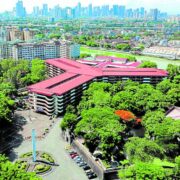PH economy set for takeoff owing to young workforce, says report

With two decades of tough fiscal reforms and a working population that has yet to reach its potential, the Philippine economy is destined for significant growth, according to a report.
“We believe the Philippines is set for takeoff, with the country’s hardworking people as its main source of growth,” Aris Dacanay, economist at HSBC Global Research, said in a report on Thursday.
Among the members of the Association of Southeast Asian Nations (Asean), it’s expected that the country’s working-age population will be the last to peak in 2035, suggesting that the Philippines will have such an advantage for a longer period of time.
“This demographic dividend should, in turn, boost [gross domestic product] per capita and increase the absolute savings available for further investment. From now until 2029, we expect average incremental savings in the economy to increase by $17.7 billion each year,” he said.
According to government data, gross national savings amounted to P6.6 trillion based on 2023 prices. This was an increase of 35 percent from P4.89 trillion in 2022, as savings from households and the government bounced back from three straight years of contraction.
Dacanay noted employment levels were higher than predicted, boosted by job creation focused on digitalization and women’s greater participation in the workforce.
And while many economies in the world were experiencing rising public debt levels, Dacanay said the Philippines has only strengthened its fiscal coffers to finance long-term investments needed to boost its overall potential.
According to the International Monetary Fund, the Philippine economy will rise to become the 28th largest economy in the world by 2029 from its current 33rd spot.
“This represents many opportunities for investors to take part in this growth story, with the economy one of the least leveraged in Asean,” Dacanay said.
“The Philippines may not have experienced the same boost in manufacturing as the rest of its regional peers, but it has found its niche in exporting ‘light-asset’ services,” he added. Dacanay was referring to the digital, telecommunications and creative fields, which include business process outsourcing, cinemas and professional consulting.
“In the age of digitalization, this serves as a window of opportunity for the Philippines. The advancement of the digital space has made services more tradable, unlocking the potential for services to expand to larger markets and grow,” he added.





















